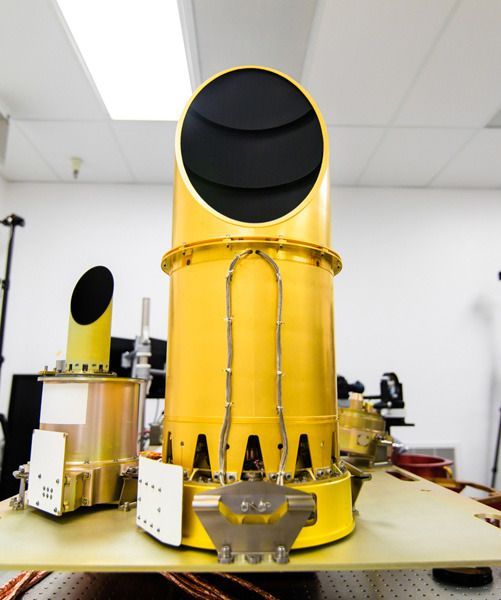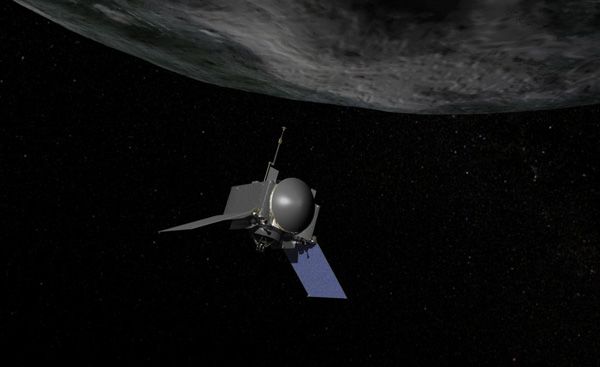
University of Arizona / Symeon Platts
Cameras Delivered for NASA’s OSIRIS-REx Mission as Launch Prep Continues (Press Release - August 24)
The first U.S. mission to return samples of an asteroid to Earth is another step closer to its fall 2016 launch, with the delivery of three cameras that will image and map the giant space rock.
A camera suite that will allow NASA’s Origins, Spectral Interpretation, Resource Identification, Security-Regolith Explorer (OSIRIS-REx) mission to see a near-Earth asteroid, map it, and pick a safe and interesting place to touch the surface and collect a sample, has arrived at Lockheed Martin Space Systems in Denver for installation to the spacecraft.
“This is another major step in preparing for our mission,” said Mike Donnelly, OSIRIS-REx project manager at NASA’s Goddard Space Flight Center in Greenbelt, Maryland. “With the delivery of the camera suite to the spacecraft contractor, we will have our full complement of cameras and spectrometers.”
The OSIRIS-REx mission is scheduled to launch in September 2016 to study Bennu, a near-Earth asteroid that’s about one-third of a mile (approximately 500 meters) across. After rendezvousing with Bennu in 2018, the spacecraft will survey the asteroid, obtain a sample, and return it to Earth in 2023.
The three camera instrument suite, known as OCAMS (OSIRIS-REx Camera Suite), was designed and built by the University of Arizona’s Lunar and Planetary Laboratory. The largest of the three cameras, PolyCam, is a small telescope that will acquire the first images of Bennu from a distance of 1.2 million miles (2 million kilometers) and provide high resolution imaging of the sample site. MapCam will search for satellites and dust plumes around Bennu, map the asteroid in color, and provide images to construct topographic maps. SamCam will document the sample acquisition event and the collected sample.
“PolyCam, MapCam and SamCam will be our mission’s eyes at Bennu,” said Dante Lauretta, principal investigator for OSIRIS-REx at the University of Arizona, Tucson. “OCAMS will provide the imagery we need to complete our mission while the spacecraft is at the asteroid.”
OSIRIS-REx is the first U.S. mission to sample an asteroid, and will return the largest sample from space since the Apollo lunar missions. Scientists expect that Bennu may hold clues to the origin of the solar system and the source of water and organic molecules that may have seeded life on Earth. OSIRIS-REx’s investigation will inform future efforts to develop a mission to mitigate an impact, should one be required.
"The most important goal of these cameras is to maximize our ability to successfully return a sample,” said OCAMS instrument scientist Bashar Rizk from the University of Arizona, Tucson. “Our mission requires a lot of activities during one trip – navigation, mapping, reconnaissance, sample site selection, and sampling. While we are there, we need the ability to continuously see what is happening around the asteroid in order to make real-time decisions."
NASA's Goddard Space Flight Center in Greenbelt, Maryland, provides overall mission management, systems engineering and safety and mission assurance for OSIRIS-REx. Dante Lauretta is the mission's principal investigator at the University of Arizona, Tucson. Lockheed Martin Space Systems in Denver is building the spacecraft. OSIRIS-REx is the third mission in NASA's New Frontiers Program. NASA's Marshall Space Flight Center in Huntsville, Alabama, manages New Frontiers for the agency's Science Mission Directorate in Washington.
Source: NASA.Gov
****

NASA / Goddard / Chris Meaney

No comments:
Post a Comment